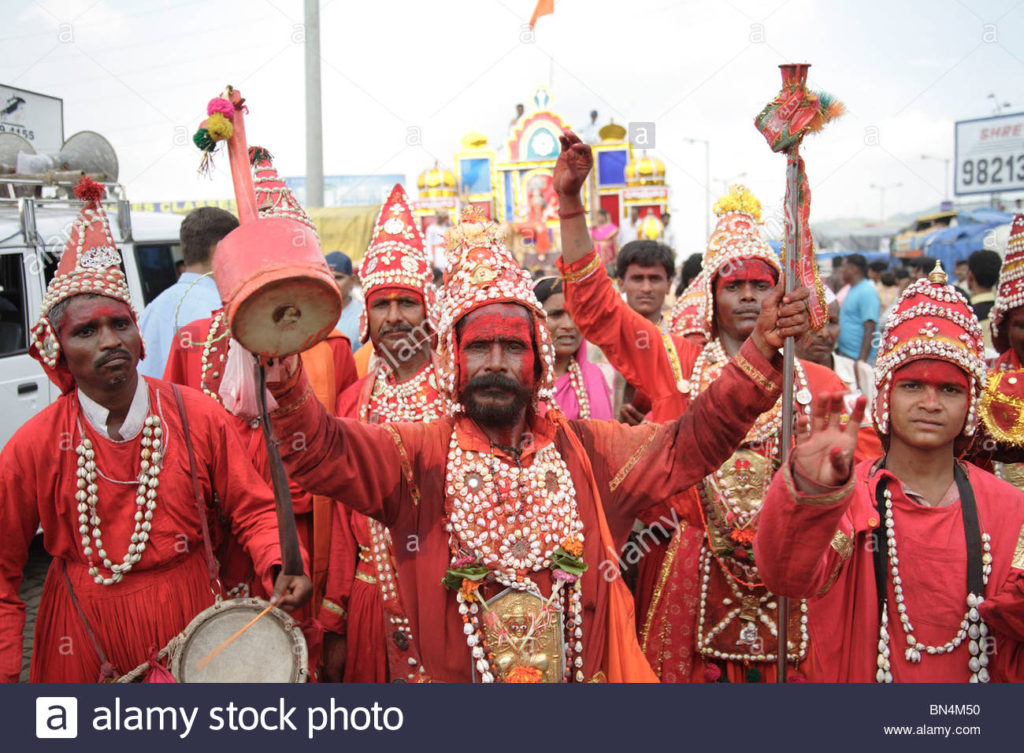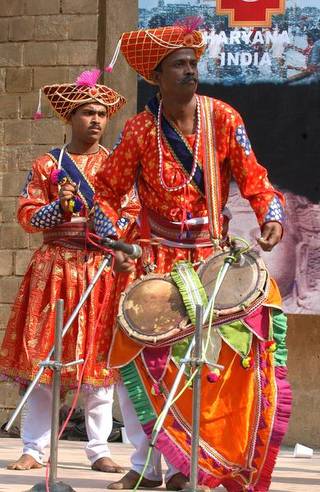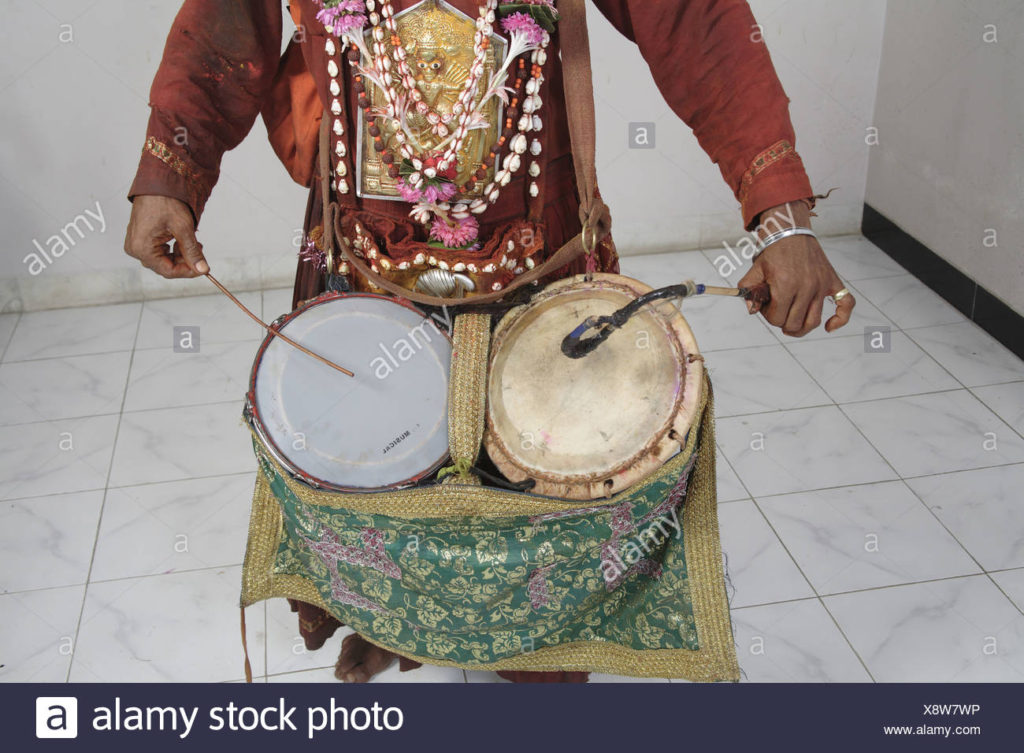
Gondhala is a prominent Marathi folk art which entails singing and dancing for the divine. This art form is said to trace its origin from Karnataka. The Sanskrit word ‘gud’,means to indulge in playful activities. From ‘gud’ came the Marathi word Gundala which subsequently gave rise to the word ‘Gondhala’. Further, from Gondhala emerged the name of the dancers, Gondhalis. The nomenclature and the functioning if this community is quashed in the recesses of the nation as the history of Gondhalis is somewhat obscure and involves mythological connotations.
The story goes that the dance form known as the ‘gondhal’ was created when the warrior sage Parshuram beheaded the demon Betasur. He sewed the head into a crown and fashioned a musical instrument out of it. Parshuram danced to thunderstorms, alarming rhythms in praise of his mother, Goddess Renuka. This dance by Parushram was called the gondhal. Even today the gondhal is performed as a ritualistic folk dance to appease the goddesses Renuka also called as Bhavani or Amba.
According to an article by The Hindu, Gondhalis in Maharashtra were not restricted to one caste. There were Brahmin gondhalis, Renukrai gondhalis, Kadamrai gondhalis, Koombhar gondhalis and so on. When the Marathas became rulers of Thanjavur, they brought the gondhal tradition with them, and there were so many gondhalis in Thanjavur that an entire street was named Gondhala! As long ago as the reign of Shivaji Maharaj, centuries before the Peshwai, the Gondhalis were a widely respected group who were invited for the ritual by the rulers. Gondhalis were highly respected during the reign of the Peshwas and received numerous expensive gifts – bracelets, earrings, bags of money, shawls and an abundance of food. In passing course of time interest in gondhalas began to wane as early as 1894. Acworth also wrote how gondhalis had not come up with any new songs.

Presence of a Gondhala was mandatory in weddings and cradle ceremonies among Deshastha Brahmins and Marathas. They would sing positively mocking the families of the bride and groom. Gondhala had a significant social purpose as there were songs about local issues as well. Ahead of a wedding or a thread ceremony, male and female members of the Gondhali tribe better known as waghya-murali were called upon to set up a “jagran-gondhal” and ward off the evil eye on a night filled with dance, music and lore. As Babaji Rao Bhosle says,”Gondhalis were knowledgeable about a lot of things- religion, international politics and economic issues. “They would spread social messages through their songs such as respect for one’s elders and dedication to the well-being of one’s family.
Gondhal is not meant for entertainment purposes only, it has always been a community dance, or a ritualistic performance accompanied by a small puja for the goddess. The players in the troupe are dressed in vibrant colours. The nayak wears a turban with zari which is decorated with a gold pendant. The dynamic, energetic movements of the dancers who are heavily adorn themselves with ornaments dressed in bright coloured clothes and toss flaming torches back and forth in their hands, produce a certain momentum, a flow of energy moving towards the supernatural thrusting the gathering into a feeling of oneness. Gondhala resembles to some extent to the whirling dance of Sufism as men in the crowd also begin whirling round and round in a dream-like state, as though in communion with the divine. Letting their hair down, women participate in the ritual as well by rotating their necks round repeatedly and inviting the deity into their being.
Gondhal is one of the few rituals free from the shackles of caste and gondhali assert this by virtue of treating everyone on par with each other. As a tribe, the Gondhali community has stringent rules of conduct. Performers are eligible to participate in a gondhal only after amassing knowledge about social structures, scriptures, traditional teachings and forming their own observations. The Gondhalis are mostly male, although women too sometimes form part of the troupe.

As published in the Deccan Herald, many Gondhalis have risen up in the socio-economic ladder and are well placed in different fields such as science, technology, law etc. Despite the fast-paced life in urban India, the nomadic Gondhalis remain an integral part of traditional families and preserve age-old traditions and folklore. Gondhali communities were once a vital part of the cultural and devotional life of Maharashtra. The headlong urbanisation and transformation of lifestyles have rendered these traditional communities obsolete and redundant leading them on the verge of extinction. Faced with the everyday reality of procuring the basic needs of food, shelter and education for their children, the members of these communities have been forced to abandon their beloved traditions. They would rather have their young ones going to schools and colleges than to groom them in what seems like outmoded, redundant traditions.
Azra is pursuing her graduation in history from LSR. Being an avid reader, her interest lies in reading, writing, history, politics, society and exploring new areas.


I just could not go away your site before suggesting that
I really enjoyed the standard info a person provide in your guests?
Is gonna be again frequently to investigate cross-check new posts